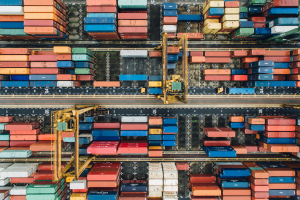Successfully transporting goods requires a thorough understanding of both legal requirements and logistical planning.
Transporting goods, whether domestically or internationally, involves a range of logistical and legal considerations. Ensuring that your goods arrive safely and comply with regulations can prevent costly delays, fines, or damage. In this blog, we’ll explore the essential legal and logistical aspects of transporting goods to help you navigate this complex process efficiently.
Understanding the Legal Framework
Transporting goods requires compliance with a range of legal obligations. These may vary based on the nature of the goods, the route, and the method of transportation (road, sea, air, or rail).
1. Regulations and Permits
Each country has its own transport laws and regulations, including permits and documentation requirements. If you’re transporting hazardous materials, for instance, additional regulations are in place to ensure safety and environmental protection. It’s important to research and understand these legalities to avoid penalties or delays.
2. Insurance Requirements
Adequate insurance coverage is a must when transporting goods. Different forms of insurance, such as freight insurance or carrier liability, protect your cargo in case of accidents, theft, or damage. Ensuring you have the correct coverage can prevent significant financial losses, offering peace of mind throughout the journey.
Logistics Planning: Steps for Safe Transportation
Logistics planning involves managing the physical flow of goods from one place to another. Well-organized logistics can optimize time, minimize costs, and ensure that goods arrive safely at their destination.
1. Route Optimization
Selecting the right transportation route is critical. Factors like distance, traffic patterns, weather conditions, and border crossing times can affect the speed and safety of your shipment. Using logistics software and real-time data can help you plan the most efficient and safe routes for your goods.
2. Proper Packaging and Labeling
Ensuring your goods are properly packaged is essential to avoid damage during transit. For delicate items, protective packaging is vital, while bulk goods may require more robust materials.
Choosing the Right Transport Method
The method of transportation you choose will depend on various factors like the nature of your goods, delivery timeframes, and budget. For businesses looking to streamline their shipping processes, platforms like Shiply USA offer a convenient solution for connecting with reliable transport providers.
1. Road Transportation
For short to medium distances, road transport is a flexible option. However, road conditions, fuel costs, and vehicle maintenance must be taken into account. Road transport is typically best for domestic shipments or goods that require door-to-door service.
2. Air Freight
For international shipments that need to arrive quickly, air freight is the fastest option. However, it is also the most expensive. Air transport is suitable for high-value items or goods with tight deadlines, but weight and size limitations must be considered.
3. Sea and Rail Transport

Sea and rail transport are cost-effective solutions for large shipments over long distances. While slower than road or air, these methods are ideal for bulky goods, especially when time constraints are less of a concern.
Compliance and Customs Procedures
For international transportation, customs regulations must be followed meticulously to avoid delays or confiscation of goods. This involves understanding import/export laws and tariffs and ensuring all required documentation (such as bills of lading, packing lists, and certificates of origin) is accurate and complete.
1. Navigating Customs Clearance
Engaging with a customs broker can help you navigate complex customs clearance procedures. They will ensure that your goods comply with local regulations and taxes, speeding up the process and minimizing any potential issues.
2. Managing Duties and Taxes
Customs duties and taxes can add unexpected costs to your shipment. Understanding the tax rates and any exemptions in place for your goods will help you manage your logistics budget effectively.
Conclusion
Successfully transporting goods requires a thorough understanding of both legal requirements and logistical planning. By adhering to regulations, selecting the appropriate transport method, and ensuring proper packaging and insurance, you can safeguard your goods and ensure timely delivery. Whether shipping domestically or internationally, careful attention to these details will lead to a smoother, safer transport process for your goods.


Join the conversation!